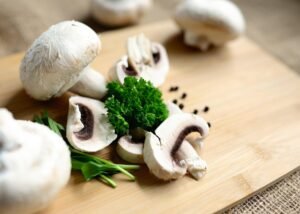What Do Garden Snakes Eat?
Table of Contents
Garden snakes, also known as garter snakes, are common reptiles found in many gardens and yards. These harmless snakes play an important role in controlling pests and maintaining the balance of nature. One question that often comes to mind when encountering a garden snake is, “What do they eat?” Let’s explore the diet of these fascinating creatures.
1. Insects and Invertebrates
Garden snakes primarily feed on insects and invertebrates. They have a particular fondness for slugs, worms, spiders, and other small creatures commonly found in gardens. These snakes are excellent hunters and use their keen sense of smell to locate their prey.
2. Frogs and Toads
Another important part of a garden snake’s diet is frogs and toads. These amphibians make a tasty meal for the snakes, and their abundance in gardens provides a readily available food source. Garden snakes are skilled at catching and consuming these larger prey items.
3. Small Fish
For garden snakes living near bodies of water, small fish become a significant part of their diet. These snakes are proficient swimmers and can catch fish with their quick strikes. They often lurk near the water’s edge, waiting patiently for an opportunity to snatch a fish for their meal.
4. Rodents
Although less common, garden snakes may also consume small rodents such as mice and voles. These snakes have a unique ability to unhinge their jaws, allowing them to swallow prey much larger than their own size. Rodents provide a more substantial meal for the snakes, and they will take advantage of this food source when available.
5. Bird Eggs
Garden snakes are known to be opportunistic feeders, and they will not pass up the chance to eat bird eggs if they come across a nest. They can climb trees and shrubs with ease, allowing them to access nests and devour the eggs. This behavior may be a concern for bird enthusiasts, but it is a natural part of the snake’s diet.
6. Carrion
When other food sources are scarce, garden snakes may scavenge carrion, which refers to the decaying flesh of dead animals. While not their primary choice, these snakes will eat carrion if necessary to survive. This behavior helps to clean up the environment by removing dead animals.
It is important to note that garden snakes are non-venomous and pose no threat to humans. They play a vital role in maintaining the ecosystem’s balance by controlling pest populations. Encountering a garden snake in your yard should be seen as a positive sign.
In conclusion, garden snakes have a diverse diet that includes insects, invertebrates, frogs, toads, small fish, rodents, bird eggs, and even carrion. Their ability to adapt to different food sources ensures their survival and contributes to the overall health of the ecosystem. So, the next time you spot a garden snake slithering through your garden, appreciate its role as a natural pest controller and let it continue its important work.

- How do I prepare to plant a vegetable garden?
- What’s the Difference Between Landscaping and Gardening?
- What is your go-to gardening trick?
- how many levels in gardenscapes?
- How to Stew Tomatoes: A Step-by-Step Guide
Discover more from Organic Gardening
Subscribe to get the latest posts sent to your email.






